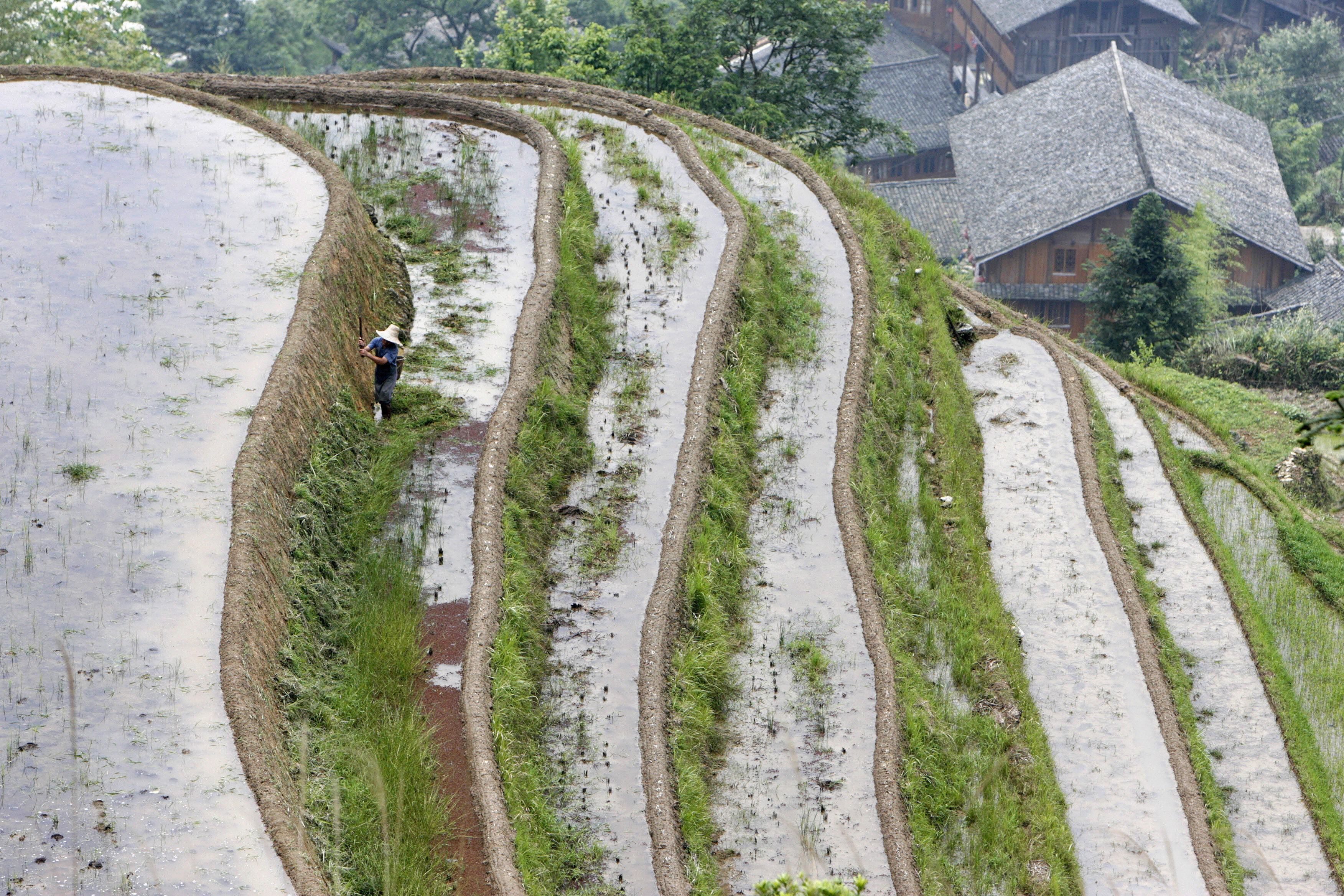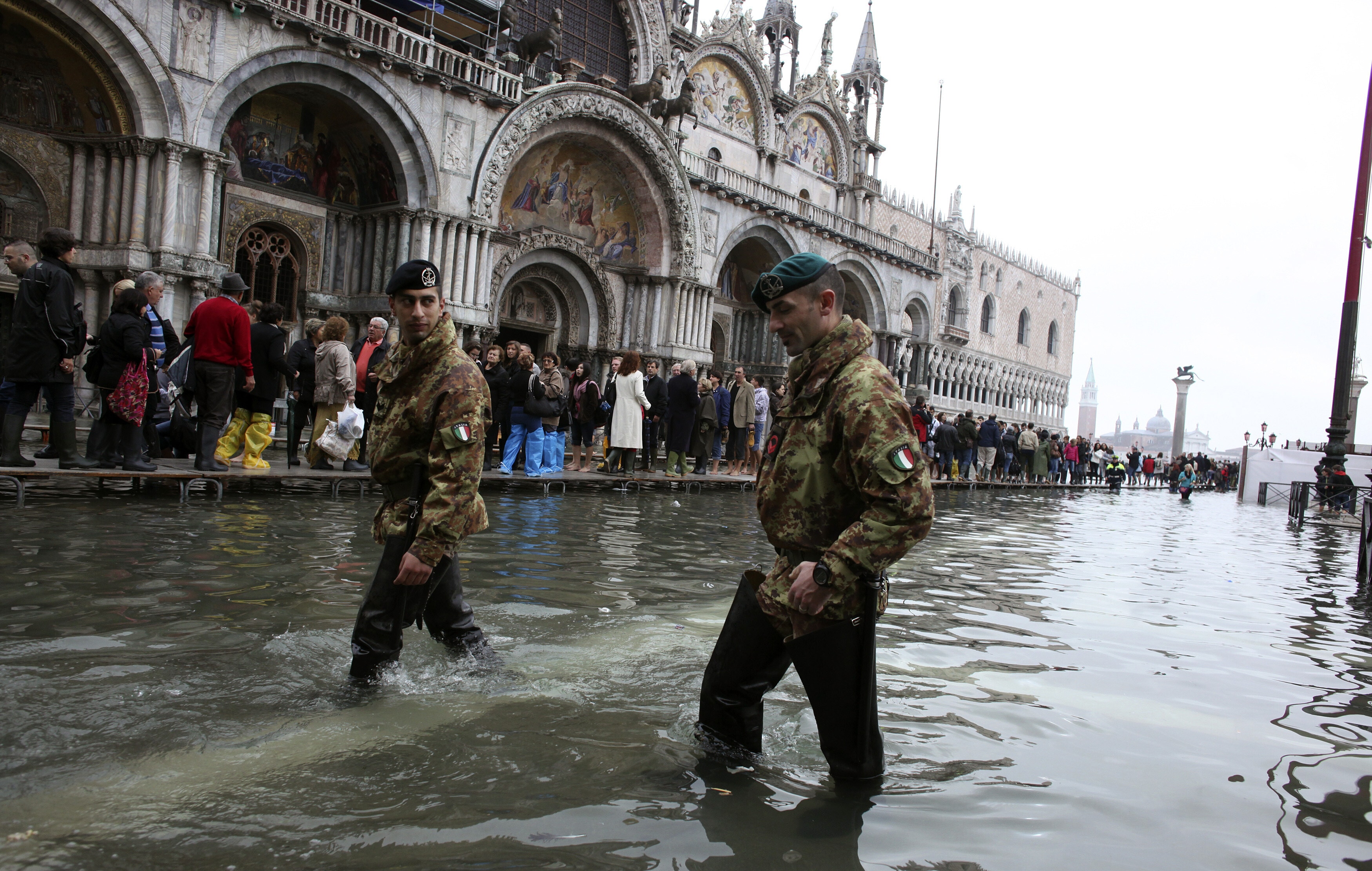How a Great Green Wall could help Africa combat climate change

Regular droughts in the Sahel region lead to shortages of food and drinking water.
Image: REUTERS/Finbarr O'Reilly (CHAD) - GM1E4660CQ401
Stay up to date:
One Trillion Trees
- The Great Green Wall initiative aims to restore land, sequester carbon and create jobs in some of the poorest communities in the world, where climate change is hitting the hardest.
- The project began as a reforestation initiative, but has grown into a broader and more ambitious plan for ecological, economic and social development.
- The future of the Great Green Wall will rely on the project’s ability to innovate. It needs to move into new areas, encouraging communities to switch to renewable energy and encouraging 'ecopreneurship'.
The Great Green Wall initiative is a reforestation project that aims to transform the lives of millions living on the frontline of the climate crisis. The goals of this African-led project are to restore 100 million hectares of land, sequester 250 million tonnes of carbon and create 10 million green jobs in rural areas. Once complete, the Great Green Wall will be the largest living structure on the planet, three times the size of the Great Barrier Reef.
The Sahel is a 5,900 kilometer belt of land below the Sahara Desert, stretching across the breadth of Africa. It is a semi-arid region, known for its variable rainfall. The area has some of the world’s highest levels of poverty, and regular droughts and floods lead to shortages of food and drinking water. These in turn lead to humanitarian crises, and to migration.
In the past, efforts to tackle these problems have often been based on simplistic assumptions. Led for the most part by international NGOs and civil society organizations, they have focused on finding financial or technological solutions to the poverty of communities in the area. They have largely ignored the wealth of knowledge that local people have about their natural surroundings.
At their worst, such projects have actually exacerbated the problems. As communities don’t buy in to initiatives that haven’t considered their needs and priorities, many ended as soon as their staff and experts left.
The Great Green Wall (GGW) initiative was initially conceived in 2007 as a reforestation project, which aimed to create a shield of trees to keep the desert at bay. However, it now has much broader and more ambitious goals. It aims to promote sustainable land and water management in the drylands of Africa through a mosaic of interventions including climate-smart agriculture, sustainable pastoralism, conservation forestry, energy transition and natural resource governance.
It aims to halt soil loss across Africa, and to help a wide variety of organizations to manage natural resources in the Sahel region. Using science and research to develop its policies, it puts an emphasis on building the resilience of communities in the area. The initiative promotes nature-based solutions to encourage sustainable land management in its member states, including Burkina Faso, Chad, Djibouti, and Niger. These protect, sustainably manage and restore natural or modified ecosystems, using agroforestry, improved cropland management, agricultural diversification, integrated water management and forest management.
The Sahel area has one of the world's highest levels of multidimensional poverty, with poor indexes for health, schooling, and quality of life, as well as one of the planet's most difficult biophysical ecosystems. The 11 founding GGW countries all score below the average sub-Saharan Africa level in the Human Development Index, and population growth is projected to continue for the rest of the century, with Chad, Mali, Niger, and Senegal seeing growth rates of more than 2.5 percent in 2050.
With its pan-African reach and significant financial commitments both from governments in Africa and from international development partners, the GGW initiative has the potential to be a game-changer in the region. However, it has had to contend with problems such as persistent land loss, the lack of a shared mechanism for monitoring progress, and ineffective involvement of some GGW stakeholders. The first appraisal survey, commissioned by the United Nations Convention to Combat Desertification and released in September 2020, indicates limited progress: only 4 million hectares have been built in the 11 founding member states, which is only 15-18% of the area the project aims to cover by 2030.
Accept our marketing cookies to access this content.
These cookies are currently disabled in your browser.
There are many reasons for these setbacks. There has been an increase in political instability in the Sahel region, which has prevented any action in vast areas. The short-term nature of the project’s funding makes it hard to plan for the long term. There are insufficient human and financial resources in the environmental sectors of the target states, and a lack of viable markets for the products of tree-based businesses.
Another challenge is to integrate the key economic sectors in these regions. In many countries, farming is treated as a separate sector to ecological restoration, and is managed by a separate government ministry. Many development projects, too, are based on specific thematic sectors. This limits the effectiveness of some of the programme’s activities.
Looking to the future
The future of the project lies in increased innovation. For example, the project needs to encourage people to use renewable energy, replacing the traditional biomass energy from charcoal and wood with affordable alternatives like solar, thermal, wind and water.
It may be possible to use drones and artificial intelligence to monitor deforestation, and even to plant tree seedlings. The project needs to tap into indigenous knowledge, and use this to underpin new businesses. It needs to innovate in the ways it communicates and engage with communities, to help them see the value in regeneration, and to inspire them with a new vision for the future.
The Great Green Wall aims to encourage “ecopreneurship”, fostering businesses that use trees sustainably, and encouraging farmers to use sustainable methods. Tree products such as gum arabic, shea butter, baobab and tamarind are the mainstay of many families and communities, providing off-farm income and subsistence especially during the lean seasons. They have huge potential to generate more income and create decent jobs.
The project also needs to innovate in the way it raises funds, bringing in the private sector, impact investors and national investment. If it can harness the power of innovation, the Great Green Wall promises to be a compelling solution to the many urgent threats not only facing the African continent, but the global community as a whole.
Don't miss any update on this topic
Create a free account and access your personalized content collection with our latest publications and analyses.
License and Republishing
World Economic Forum articles may be republished in accordance with the Creative Commons Attribution-NonCommercial-NoDerivatives 4.0 International Public License, and in accordance with our Terms of Use.
The views expressed in this article are those of the author alone and not the World Economic Forum.
Related topics:
Forum Stories newsletter
Bringing you weekly curated insights and analysis on the global issues that matter.
More on Climate ActionSee all
Hu Xiangdong and Felipe Carazo
August 1, 2025
Kate Whiting
July 31, 2025
Florian Krampe
July 31, 2025
Andrea Willige
July 30, 2025
Tom Crowfoot
July 30, 2025





